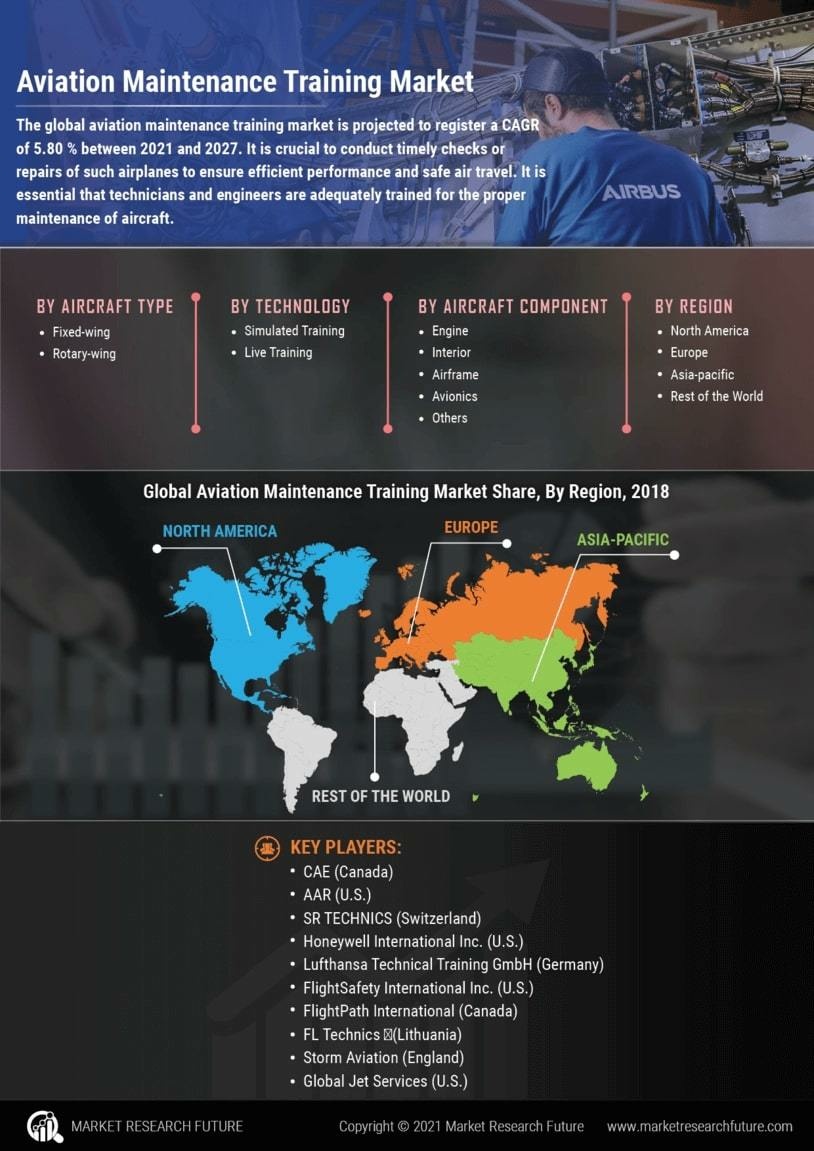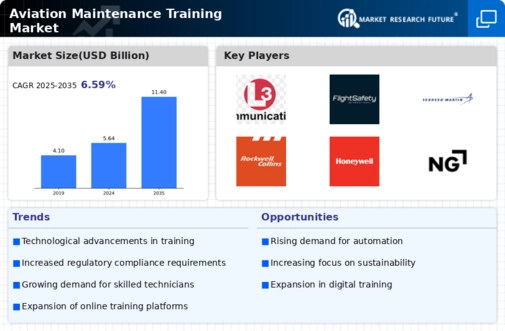Market Growth Projections
The Global Aviation Maintenance Training Market Industry is poised for substantial growth, with projections indicating a market value of 11.4 USD Billion by 2035. This anticipated growth reflects the increasing emphasis on skilled workforce development within the aviation sector. The market is expected to experience a compound annual growth rate (CAGR) of 6.58% from 2025 to 2035, driven by factors such as technological advancements, regulatory compliance, and the global expansion of the aviation industry. Training providers are likely to adapt their offerings to meet the evolving needs of the market, ensuring that technicians are equipped with the necessary skills to navigate the complexities of modern aviation maintenance.
Global Expansion of the Aviation Sector
The global expansion of the aviation sector significantly influences the Global Aviation Maintenance Training Market Industry. With increasing air travel demand, airlines are expanding their fleets, which in turn drives the need for maintenance training. The projected market growth to 11.4 USD Billion by 2035 underscores this trend. Emerging markets, particularly in Asia-Pacific and the Middle East, are witnessing rapid aviation growth, necessitating the establishment of robust training frameworks. As airlines and maintenance organizations seek to enhance operational efficiency, investment in training programs becomes paramount. This expansion not only creates opportunities for training providers but also ensures that the workforce is adequately prepared to meet future challenges.
Increasing Demand for Skilled Technicians
The Global Aviation Maintenance Training Market Industry is experiencing a notable surge in demand for skilled technicians. As the aviation sector expands, the need for qualified personnel to maintain and repair aircraft becomes increasingly critical. In 2024, the market is valued at 5.64 USD Billion, reflecting the industry's recognition of the importance of comprehensive training programs. This demand is driven by the growing fleet of commercial and private aircraft, necessitating a workforce equipped with the latest technical skills. Consequently, training organizations are adapting their curricula to meet these evolving requirements, ensuring that technicians are well-prepared for the challenges of modern aviation maintenance.
Regulatory Compliance and Safety Standards
Regulatory compliance and safety standards play a pivotal role in the Global Aviation Maintenance Training Market Industry. Governments and aviation authorities worldwide impose stringent regulations to ensure the safety and reliability of air travel. As a result, training programs must align with these regulations, necessitating continuous updates and enhancements to curricula. This compliance not only ensures that technicians are well-versed in safety protocols but also fosters a culture of accountability within the industry. The emphasis on regulatory adherence is expected to drive market growth, as organizations invest in training solutions that meet or exceed these standards, thereby enhancing the overall safety of aviation operations.
Technological Advancements in Training Methods
Technological advancements are reshaping the landscape of the Global Aviation Maintenance Training Market Industry. Innovations such as virtual reality, augmented reality, and simulation-based training are enhancing the learning experience for aviation maintenance students. These technologies allow for immersive training scenarios that replicate real-world situations, thereby improving retention and skill acquisition. As the industry progresses, training providers are integrating these advanced methodologies into their programs, which not only increases engagement but also prepares technicians for the complexities of contemporary aircraft systems. This shift towards technology-driven training is likely to contribute to the market's projected growth, with a CAGR of 6.58% anticipated from 2025 to 2035.
Focus on Sustainability and Environmental Standards
The Global Aviation Maintenance Training Market Industry is increasingly focusing on sustainability and environmental standards. As the aviation sector faces pressure to reduce its carbon footprint, maintenance training programs are evolving to incorporate sustainable practices. This includes training technicians on eco-friendly maintenance procedures and the use of sustainable materials. Organizations are recognizing that integrating sustainability into training not only aligns with global environmental goals but also enhances their competitive edge. By equipping technicians with the knowledge to implement sustainable practices, the industry can contribute to a greener future while ensuring compliance with emerging environmental regulations. This focus on sustainability is likely to shape the future of aviation maintenance training.








